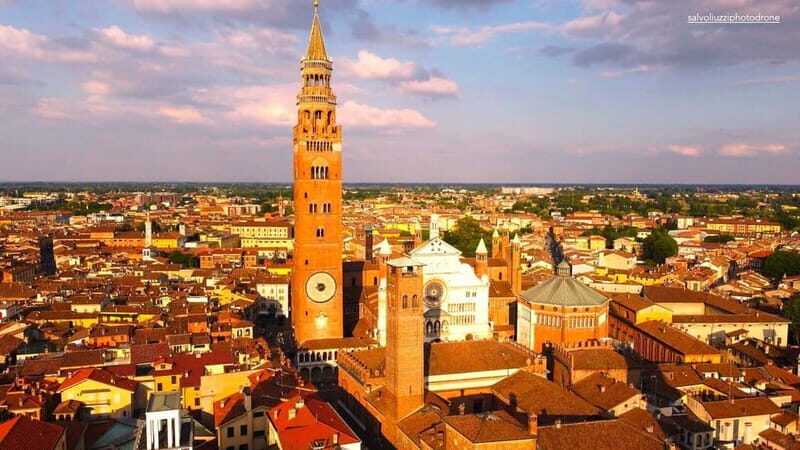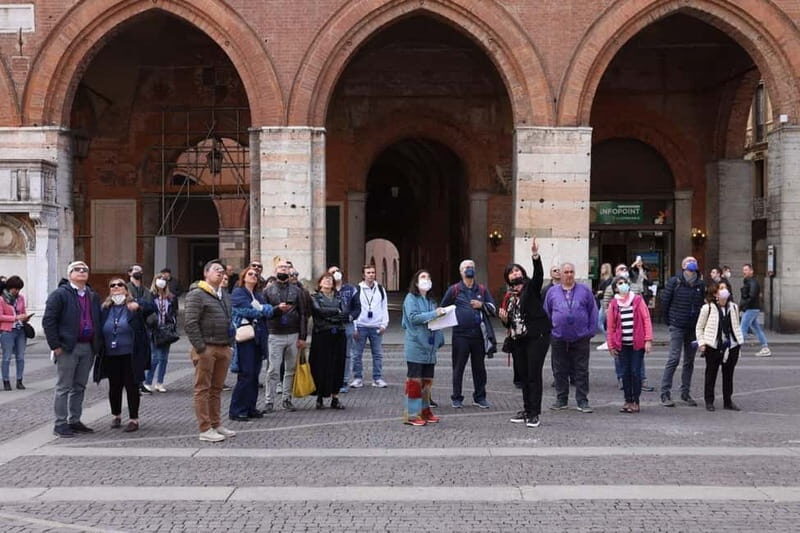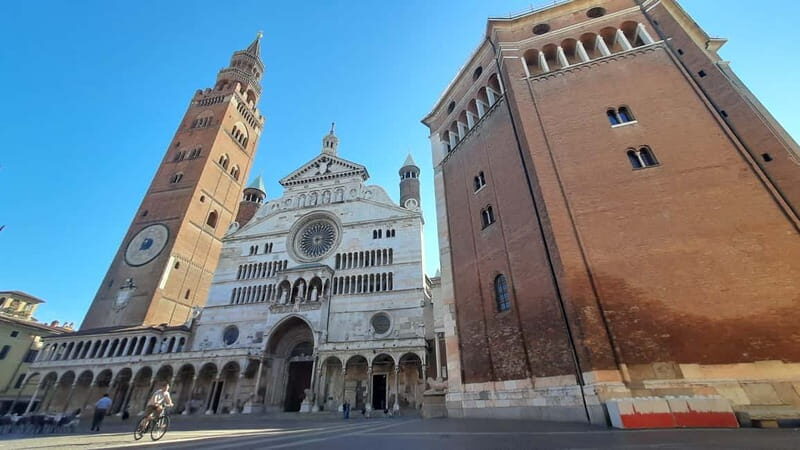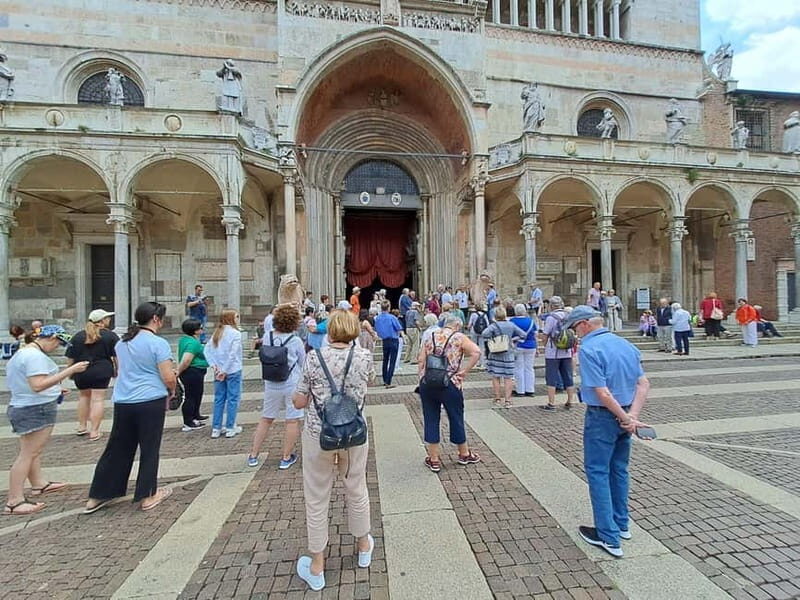Cremona: City of art and music in Italian
If you’re heading to Lombardy and love discovering authentic Italian towns, Cremona offers a charming glimpse into history, art, and world-renowned violin craftsmanship. This 1.5-hour guided walking tour takes you through the heart of Cremona’s historic center, where you’ll see iconic landmarks like the Cathedral, the Town Hall, and the Torrazzo. Led by knowledgeable guides who bring the city’s stories alive, this experience is perfect for travelers eager to understand why Cremona has earned its artistic and musical reputation.
Two things we particularly appreciate about this tour are the opportunity to step inside the Cathedral, dubbed the “Sistine Chapel of the Po Valley,” and the chance to learn about the Cremonese violin-making tradition, which is recognized by UNESCO. The intimate setting allows for a genuine connection with the city’s rich cultural layers.
A possible consideration is the timing of the Town Hall visit, which is only open from Monday to Saturday, so it doesn’t include Sundays or festive days. If you’re visiting during those times, you might need to plan accordingly. This tour suits history buffs, art lovers, music enthusiasts, and anyone curious about Italian craftsmanship, especially those who want a well-rounded introduction to Cremona’s treasures.
This experience made our article of The 4 Top Tours In Cremona: Which Is Best?.
Key Points

- Historic core: Explore Cremona’s main monuments on foot, including the Cathedral and Baptistery.
- Inside access: Visit the interior of the Cathedral and the City Hall’s monumental rooms.
- UNESCO heritage: Gain insight into Cremonese lutherie, an artisan tradition recognized worldwide.
- Authentic experience: Small group guided tour offering personalized storytelling.
- Photogenic spots: Capture stunning views of medieval squares and iconic towers.
- Accessible: Wheelchair-friendly and flexible cancellation policy.
A Detailed Look at Cremona’s Guided Tour

For broader city exploration in Cremona, we've covered these other tours
Starting at the Cremona Tourist Office
Your journey begins at the Infopoint, where friendly staff help you meet your guide and get oriented. From here, the tour is designed to highlight the best of Cremona’s artistic and architectural gems while providing historical context that makes each monument come alive.
Visiting the Cremona Cathedral
The Cremona Cathedral is the centerpiece of the square and an absolute must-see. With its impressive façade and intricate frescoes from the 16th century, this church is often called the “Sistine Chapel of the Po Valley.” Our guide, whose enthusiasm was praised in reviews, walks you through the art and architecture, revealing stories behind the stunning frescoes and sculptures.
What makes this part special is the opportunity to step inside and see firsthand the craftsmanship that went into creating this sacred space. The interior is often described as breathtaking, and many say it’s worth taking the time to admire the detailed artwork close-up.
The Octagonal Baptistery and the Torrazzo
Next, you’ll stop at the Baptistery, an octagonal structure outside the cathedral, and the Torrazzo, Europe’s tallest brick bell tower. The Torrazzo’s sheer height (over 110 meters) and its distinctive shape make it a city landmark. From outside, you’ll appreciate the views of the city, and if timing allows, you might glimpse the surrounding medieval streets.
We love that the Baptistery offers a glimpse into early Christian architecture, even though entry isn’t included. You’ll get a sense of the religious history that shaped Cremona.
More Great Tours NearbyThe Town Hall and Loggia dei Militi
The Town Hall is a highlight, particularly for its monumental rooms full of history. However, it’s only open from Monday to Saturday, which is a key detail for planning your visit. When accessible, inside you can marvel at the architecture and perhaps imagine the city’s civic life centuries ago.
The Loggia dei Militi is an external structure that adds to the picturesque square setting. Though you can only view it from outside, its architecture reflects Cremona’s civic pride.
Learning about Cremonese Luthierie
One of the most distinctive aspects of this tour is the focus on Cremonese lutherie, an artisanal craft recognized by UNESCO as an intangible cultural heritage. Our guide explained how Cremona became the world capital of violin-making, with masters like Stradivari hailing from here.
The tour offers a historical overview but also hints at the ongoing tradition, which continues to attract musicians and collectors worldwide. For enthusiasts, this segment elevates the experience beyond just sightseeing, giving a deeper appreciation for Cremona’s reputation.
Visiting the Roman Road and Other Surroundings
As you stroll, you’ll see remnants of the Roman road from the 1st century BC, offering a sense of the city’s ancient roots. The walk also covers other notable sights, providing a well-rounded snapshot of Cremona’s layered history and architecture.
End of Tour and Flexibility
The tour concludes back at the Infopoint, making it easy to continue exploring on your own or head to nearby attractions. The small group setting ensures personalized attention, and the flexible cancellation policy adds peace of mind.
Who Will Love This Tour?

This guided walk is ideal for travelers interested in history, architecture, and art, especially those who love to see interiors of historic buildings. Music lovers will appreciate the segment on violin-making, which is woven into the city’s story. It’s also suitable for those with mobility considerations, as the tour is accessible and includes external views of key monuments.
If you’re short on time but want a meaningful, curated experience of Cremona’s highlights, this tour delivers a well-balanced taste of the city’s cultural wealth.
Price and Value Analysis

At a modest cost for 1.5 hours of guided sightseeing, this tour offers excellent value—especially considering the inside visits to the Cathedral and the City Hall, which are often included in higher-priced experiences elsewhere. The personalized storytelling and the opportunity to see some of Cremona’s most iconic landmarks make this a worthwhile investment for a quick but meaningful introduction to the city.
Practical Tips
- Timing: Check the availability to align with your schedule, especially if you want inside access to the Town Hall.
- Comfort: Wear comfortable shoes for walking on cobblestone streets.
- Photography: Bring your camera to capture the stunning views, especially the rooftops and medieval square.
- Booking: Reserve in advance since the tour is popular and has limited duration.
The Sum Up
This Cremona walking tour offers a genuine and insightful way to connect with the city’s artistic and musical soul. It strikes a balance between seeing stunning monuments and learning stories that bring history to life. The inside visits to the Cathedral and the City Hall add depth, while the focus on violin-making underscores Cremona’s unique global reputation.
It’s perfect for travelers who value authentic experiences, appreciate art and history, and want a manageable, engaging overview of this charming Italian city. If you’re curious about Italy’s craftsmanship traditions or simply want to walk through a beautifully preserved medieval town, this tour is a solid choice.
FAQ
How long is the tour?
The guided walking tour lasts approximately 1.5 hours, offering a concise yet comprehensive look at Cremona’s main sights.
Where does the tour start and end?
The tour begins and ends at the Cremona Tourist Office (Infopoint), making it easy to integrate into your day’s plans.
Is inside access included?
Yes, the tour includes visits inside the Cremona Cathedral and the City Hall, with descriptions of their artistic and historical significance.
Can I visit the Town Hall on Sundays?
No, the Town Hall is only open from Monday to Saturday, so plan your visit accordingly if inside access is important.
Is the tour wheelchair accessible?
Yes, the experience is wheelchair friendly, allowing more travelers to enjoy Cremona’s highlights comfortably.
What’s the focus of the tour?
The tour emphasizes Cremona’s architectural masterpieces and the tradition of violin-making, which is recognized as UNESCO Intangible Heritage, making it especially appealing for art and music lovers.
